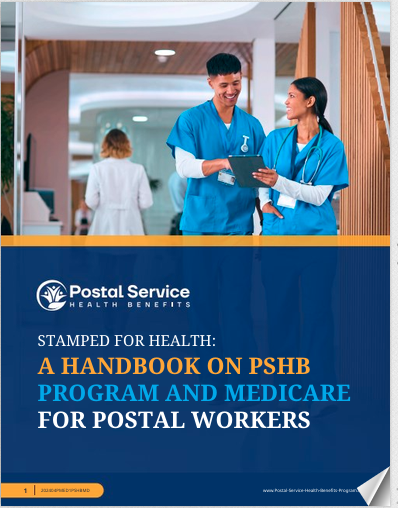Key Takeaways
- Evaluating your healthcare needs and understanding the options available are crucial steps when choosing your Postal Service Health Benefits (PSHB) plan.
- Consider factors such as plan coverage, costs, and the network of healthcare providers to make an informed decision that best suits your needs.
What to Look for When Picking Your PSHB Plan: A Guide for Postal Employees
Navigating the complex world of health insurance can be overwhelming, especially for postal employees who are transitioning to the Postal Service Health Benefits (PSHB) program. With various plans available, it’s important to understand the key factors to consider when selecting the best option for your healthcare needs. This guide will walk you through what to look for when picking your PSHB plan, ensuring that you make an informed decision that aligns with your personal health requirements and financial situation.
Understanding Your Healthcare Needs
The first step in selecting a PSHB plan is to thoroughly assess your healthcare needs. Every individual’s situation is unique, and understanding your own health profile is crucial for making the right choice. Consider the following:
- Chronic Conditions: If you have ongoing health issues that require regular treatment, look for a plan that offers comprehensive coverage for your specific needs, including specialist visits, medications, and hospital care.
- Medications: Evaluate the formulary, or the list of covered drugs, in each plan. Ensure that your prescriptions are included and compare the copayment or coinsurance amounts.
- Frequency of Care: Determine how often you visit healthcare providers. If you require frequent medical attention, a plan with lower copays and out-of-pocket costs might be more cost-effective.
- Family Health History: Consider any hereditary conditions that might necessitate future medical care. This foresight can guide you in choosing a plan with appropriate coverage.
Evaluating Plan Coverage
Once you have a clear understanding of your healthcare needs, the next step is to evaluate the coverage options provided by different PSHB plans. Coverage can vary widely between plans, so it’s important to pay attention to the details:
- In-Network vs. Out-of-Network: Review the network of healthcare providers associated with each plan. Some plans offer extensive networks, while others may limit you to specific providers. Out-of-network care is often more expensive, so ensure that your preferred doctors and hospitals are included in the plan’s network.
- Preventive Services: Check if the plan covers preventive services such as vaccinations, screenings, and wellness check-ups without additional out-of-pocket costs. Preventive care is essential for maintaining long-term health and can help catch potential issues early.
- Specialty Care: If you require care from specialists, ensure that the plan provides adequate coverage for these services. This is particularly important for those with chronic conditions or specialized healthcare needs.
- Emergency Services: Evaluate the plan’s coverage for emergency care, both in and out of the network. It’s crucial to understand how emergencies are handled, especially if you frequently travel or live far from major healthcare facilities.
Considering Costs: Premiums, Deductibles, and Out-of-Pocket Expenses
Healthcare costs are a significant factor when choosing a PSHB plan. It’s not just about the monthly premiums; you need to consider the overall cost structure, including deductibles, copayments, and out-of-pocket maximums.
- Premiums: The premium is the amount you pay each month for your health insurance. While lower premiums can be attractive, they often come with higher deductibles and out-of-pocket costs. Balance your budget with your expected healthcare needs to find the right premium level.
- Deductibles: The deductible is the amount you must pay out-of-pocket before your insurance starts covering expenses. Plans with higher deductibles typically have lower premiums, but this might not be cost-effective if you require frequent medical care.
- Copayments and Coinsurance: These are the costs you share with your insurance after your deductible is met. Copayments are fixed amounts for services, while coinsurance is a percentage of the total cost. Understanding these costs will help you anticipate your financial responsibilities under each plan.
- Out-of-Pocket Maximums: This is the most you will pay in a policy period (usually a year) before your plan covers 100% of your healthcare costs. Plans with lower out-of-pocket maximums provide more financial protection but may have higher premiums.
Network of Healthcare Providers
The network of healthcare providers is a crucial consideration when selecting a PSHB plan. This network includes doctors, hospitals, and other healthcare providers that have agreed to provide services to the plan’s members at negotiated rates.
- Provider Availability: Ensure that your preferred healthcare providers, including primary care physicians, specialists, and hospitals, are within the plan’s network. If you have longstanding relationships with certain doctors, make sure they are included in the plan you choose.
- Geographical Coverage: Consider whether the plan offers coverage in the regions where you live, work, or frequently travel. If you split your time between different locations, choose a plan with a broad network that accommodates your lifestyle.
- Telemedicine: With the increasing reliance on virtual healthcare, it’s worth checking if the plan includes telemedicine services. Telemedicine can be a convenient and cost-effective way to receive care, especially for minor conditions or follow-up visits.
Flexibility and Additional Benefits
While basic coverage is essential, it’s also important to consider the flexibility and additional benefits offered by each PSHB plan. These features can enhance your overall healthcare experience and provide extra value.
- Flexible Spending Accounts (FSAs) and Health Savings Accounts (HSAs): Some plans offer the option to contribute to FSAs or HSAs, which allow you to set aside pre-tax dollars for medical expenses. These accounts can be a smart way to manage out-of-pocket costs and save on taxes.
- Wellness Programs: Many plans offer wellness programs that include health coaching, gym memberships, smoking cessation programs, and weight management services. These programs can support your overall well-being and help you achieve personal health goals.
- Vision and Dental Coverage: If you need vision or dental care, look for plans that offer these as part of the package or as optional add-ons. Dental and vision coverage is not always included in basic health plans, so this is an important consideration if these services are important to you.
- Mental Health Services: Mental health is as important as physical health. Ensure that the plan offers comprehensive coverage for mental health services, including therapy, counseling, and psychiatric care.
Long-Term Considerations
When choosing a PSHB plan, it’s essential to think about your long-term healthcare needs. While immediate coverage is important, planning for future health scenarios can save you from unexpected costs and ensure continuity of care.
- Aging and Health Changes: As you age, your healthcare needs will likely increase. Choose a plan that can adapt to your changing health status, with good coverage for services you may need later in life, such as long-term care, home healthcare, or specialized treatments.
- Family Planning: If you plan to start or expand your family, ensure that the plan offers comprehensive maternity and pediatric care. This includes prenatal visits, delivery, and postnatal care, as well as healthcare services for your child.
- Retirement Considerations: Consider how your healthcare needs might change as you approach retirement. Some plans offer better coverage for retirees, so it’s important to think about how your current choice will serve you in the long run.
Making the Final Decision
Choosing the right PSHB plan requires a careful evaluation of your healthcare needs, the coverage options available, and the associated costs. Take the time to compare different plans and consider how each one aligns with your personal and financial situation.
- Plan Comparison Tools: Utilize any plan comparison tools provided by the PSHB program to help you weigh the pros and cons of each option. These tools can simplify the decision-making process by highlighting the differences between plans based on your specific needs.
- Seek Professional Advice: If you’re unsure about which plan is best for you, consider speaking with a licensed insurance agent who can provide personalized advice. An agent can help you navigate the complexities of the PSHB program and ensure that you make an informed decision.
- Review and Reassess Annually: Your healthcare needs can change over time, so it’s important to review your plan annually during the open enrollment period. This allows you to make adjustments as needed and ensures that your coverage remains appropriate for your situation.
Making the Best Choice for Your Health and Finances
Selecting the right PSHB plan is a significant decision that can impact your health and financial well-being. By carefully evaluating your options and considering both your current and future healthcare needs, you can choose a plan that provides comprehensive coverage at a cost you can afford. Remember, the key to a successful health insurance plan is one that offers both the coverage you need and the flexibility to adapt as your life changes. Make sure to review your options regularly and consult with professionals when necessary to keep your coverage aligned with your needs.
Contact Information:
Email: [email protected]
Phone: 9364196707





